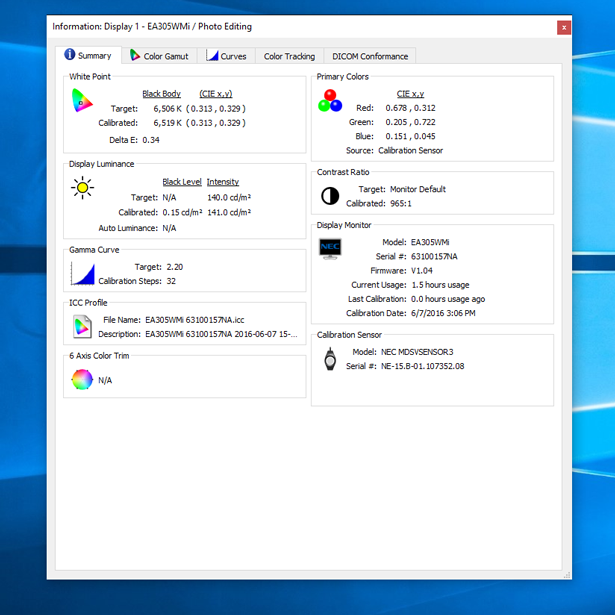NEC MultiSync EA305WMi Professional Monitor With ControlSync Review
As we mentioned earlier, the OSD menu is easy to use. The menu has individual sliders for brightness, contrast, and black level, and also has two eco modes: one at 15 percent power savings and another at 40 percent savings. As power-friendly as these settings are, they greatly dim the display and don’t strike us as tools that most users are likely to use often.
We noticed no backlight bleed and found the screen to be fairly bright. In our office setting, we found we could dial back the brightness quite a bit while still having a bright, clear picture. Colors were uniform, saturation was on point, and overall sharpness was very good. There were not issues to speak of when using the various test patters.
Next, we connected NEC’s own MDSVSENSOR3 ($199), which plugs into your computer’s USB port. We also fired up the optional SpectraView II software. Between the device’s quick start guide and the software’s instructions, we quickly had the device properly attached to the panel and were able to start calibrating. The process was short (about 10 minutes) and painless and made a visible difference. If color accuracy is paramount to your workflow, a professional display like this one, calibrated with the proper tools makes a world of difference.








